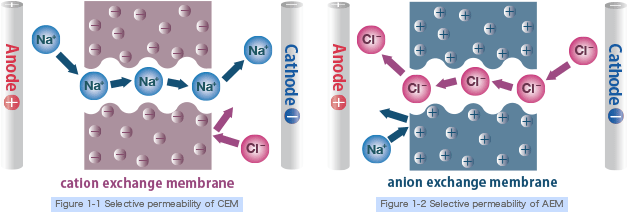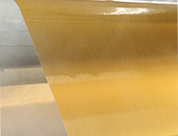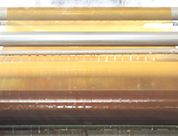Ion exchange membranes have ionic permselectivity and are classified into cation exchange membranes and anion exchange membranes.
Since negative-charged groups are fixed to cation exchange membrane, anions are rejected by the negative charge and cannot permeate through the cation exchange membrane (Figure 1-1). This is because cation exchange membranes are only permeable by cations. The anion exchange membranes perform the opposite way compared to cation exchange membranes (Figure 1-2). These selective permeations are carried out by DC current at an electorodialyzer.
Similar behavior happens in ion exchange resin. The ion exchange resin is in the granular form and performs as adsorptive exchange of ions (Figure 2). But it requires regeneration when adsorptive capacity is consumed. On the contrary, as the ion exchange membrane allows ions to permeate by DC electric current, no regeneration is required and allows for continuous use for an extended period of time.
NEOSEPTA has excellent characteristics as shown below.

High ionic permselectivity
NEOSEPTA has excellent ionic selectivity permselectivity which enables an efficient operation of electrodialysis.

Low electric resistance
Although NEOSEPTA is provided with backing material for reinforcement, its electric resistance is low which is very important for plant operation costs.

High mechanical strength
With backing material for reinforcement, NEOSEPTA demonstrates high mechanical strength and ease of handling.

High chemical stability
NEOSEPTA is stable against various kinds of chemicals.

High dimensional stability
Since NEOSEPTA has a chemically stable structure, it demonstrates high dimensional stability in a practical use by limiting swelling and shrinking resulting from change of temperature, composition, concentration, etc.

Low diffusion of solute and solvent
Since NEOSEPTA has a low diffusion coefficient of solute or solvent, undesired back diffusion or transfer can be minimized.

Ability to separate monovalent ions and multivalent ions
Specific membranes enable separation of monovalent and multivalent ions in the solution.

Standard-grade…Used for general concentration and desalination.
Special-grade…We have various membranes with specific characteristics such as selective permeability for monovalent ions, chemical stability, etc.
To maximize the performance of NEOSEPTA, please read the following instructions.

Keep the NEOSEPTA wet and never let it become dry.
 |
To prevent damage and deterioration of the membrane, avoid folding or contact with foreign substances. |

When storing, be sure to keep the NEOSEPTA in a dark and cool place to avoid drying.
 |
Prevent the membrane from contacting solutions containing oil, oxidizing agents, and/or polymer electrolyte (surfactant, etc.). |

![Ion exchange membrane[NEOSEPTA]](images/02_title.jpg)



